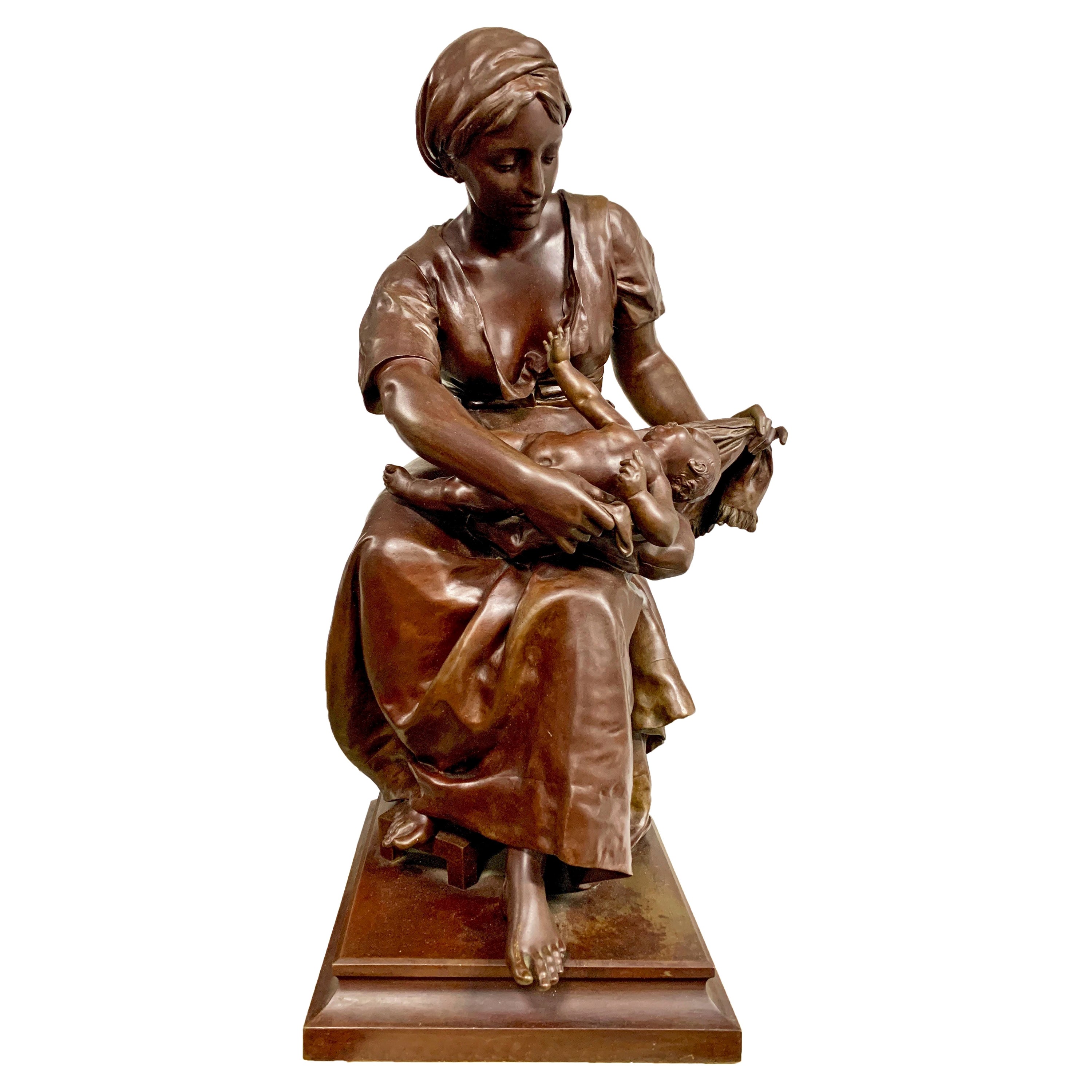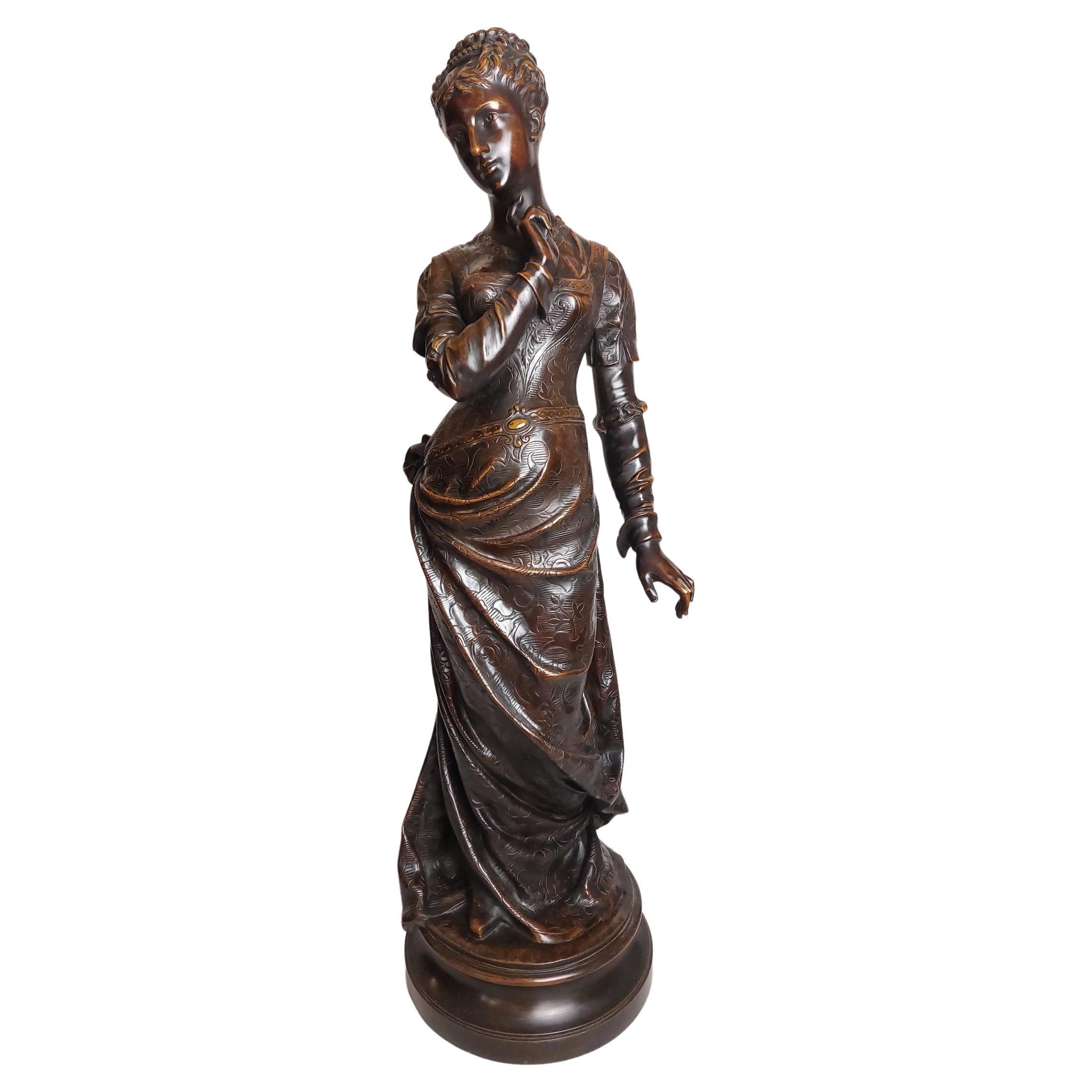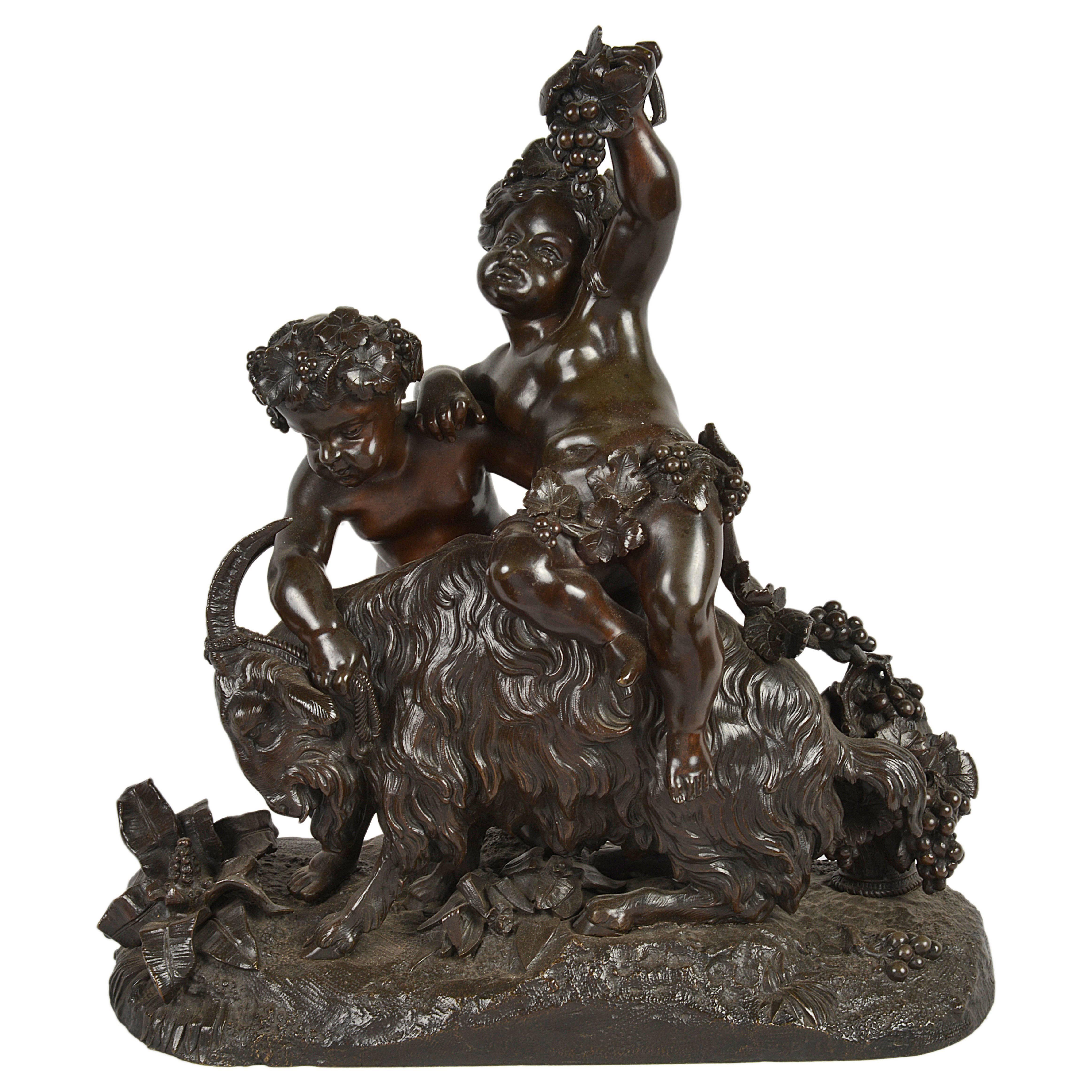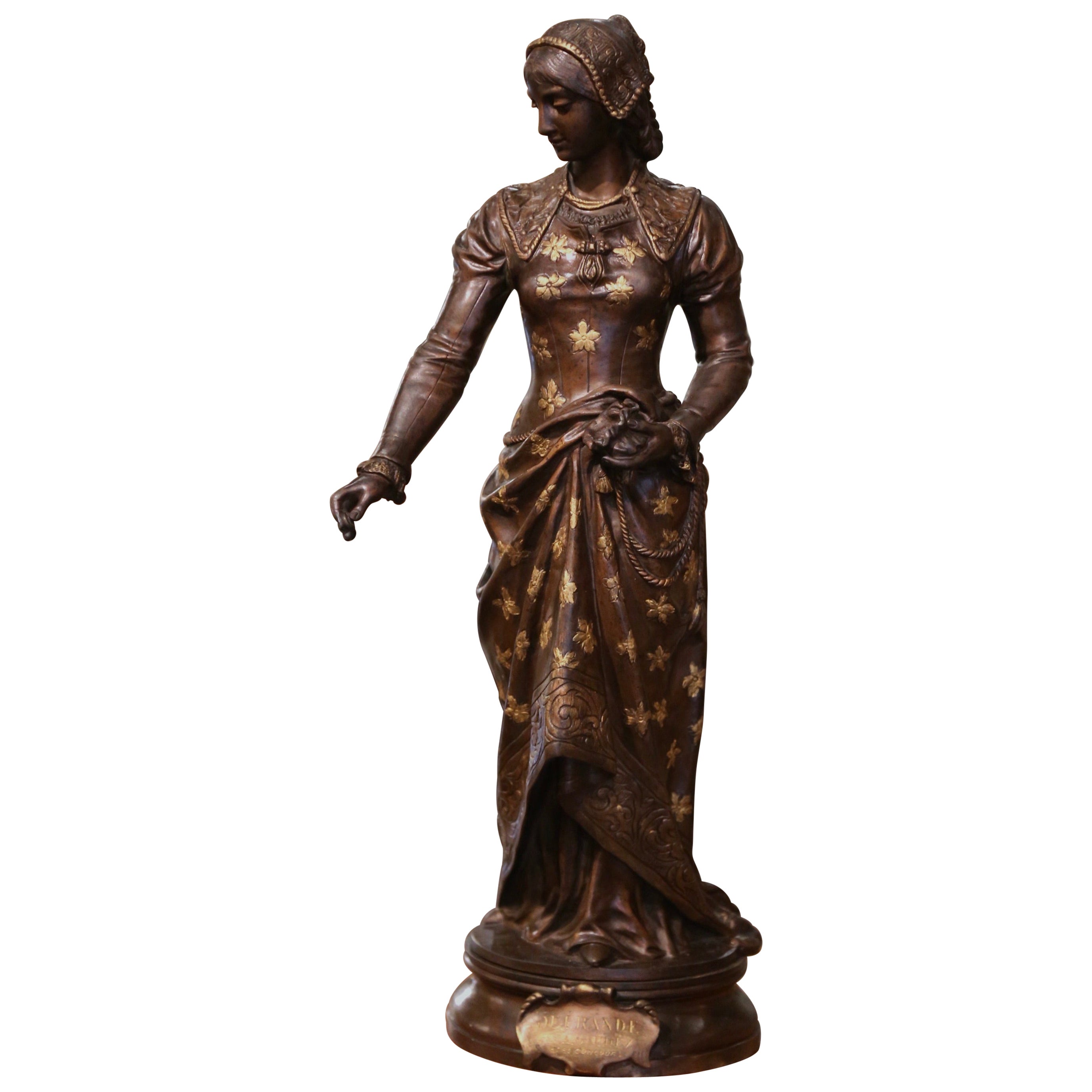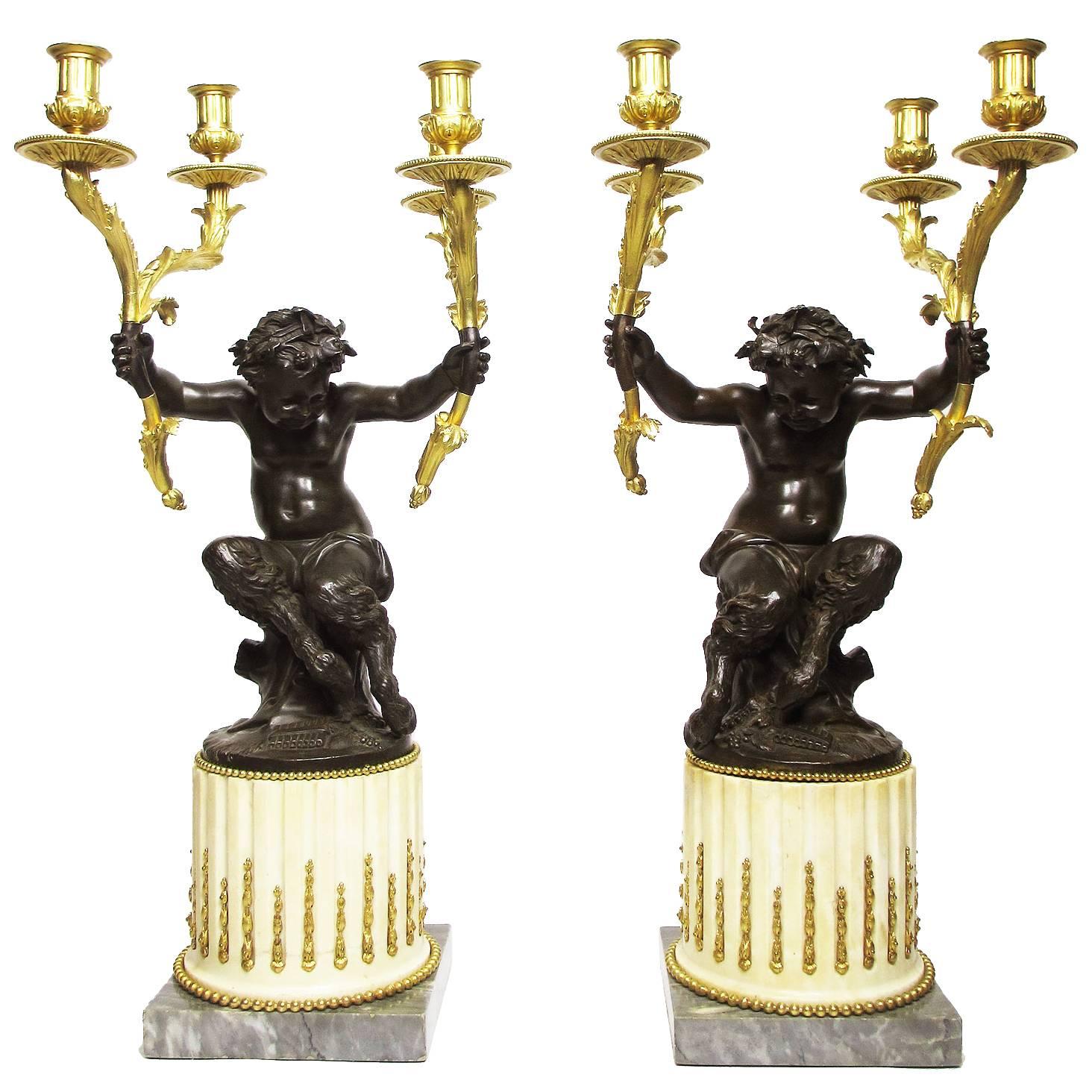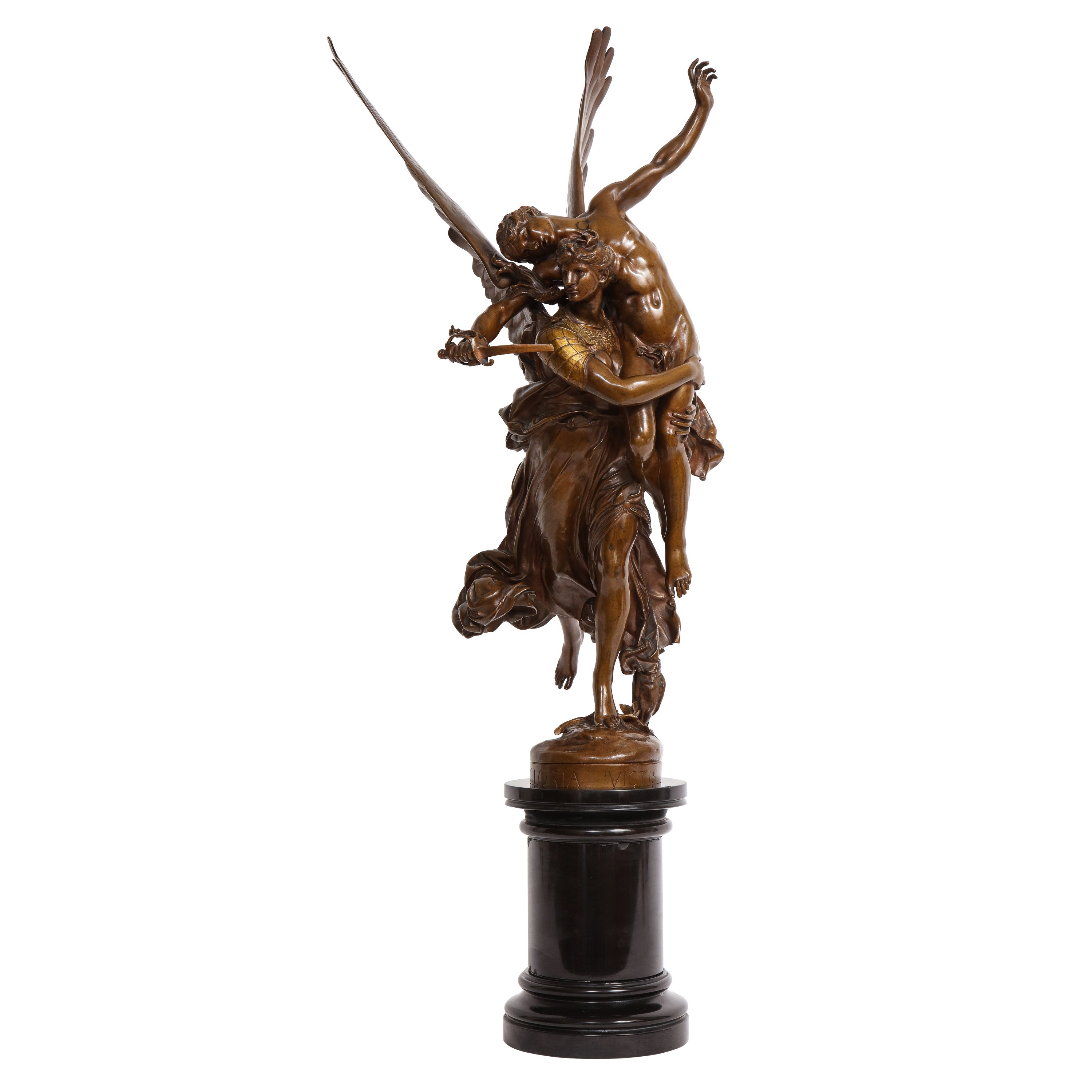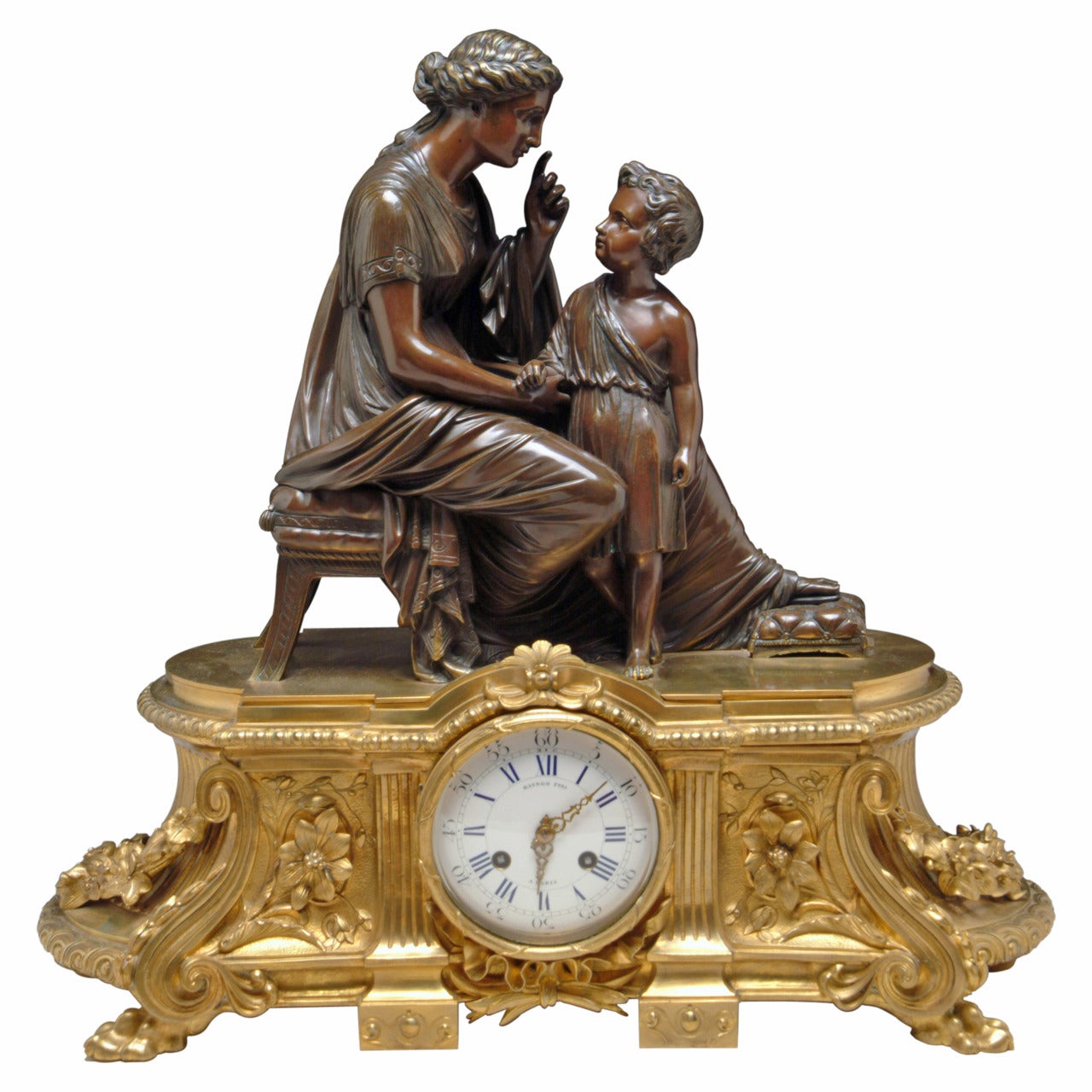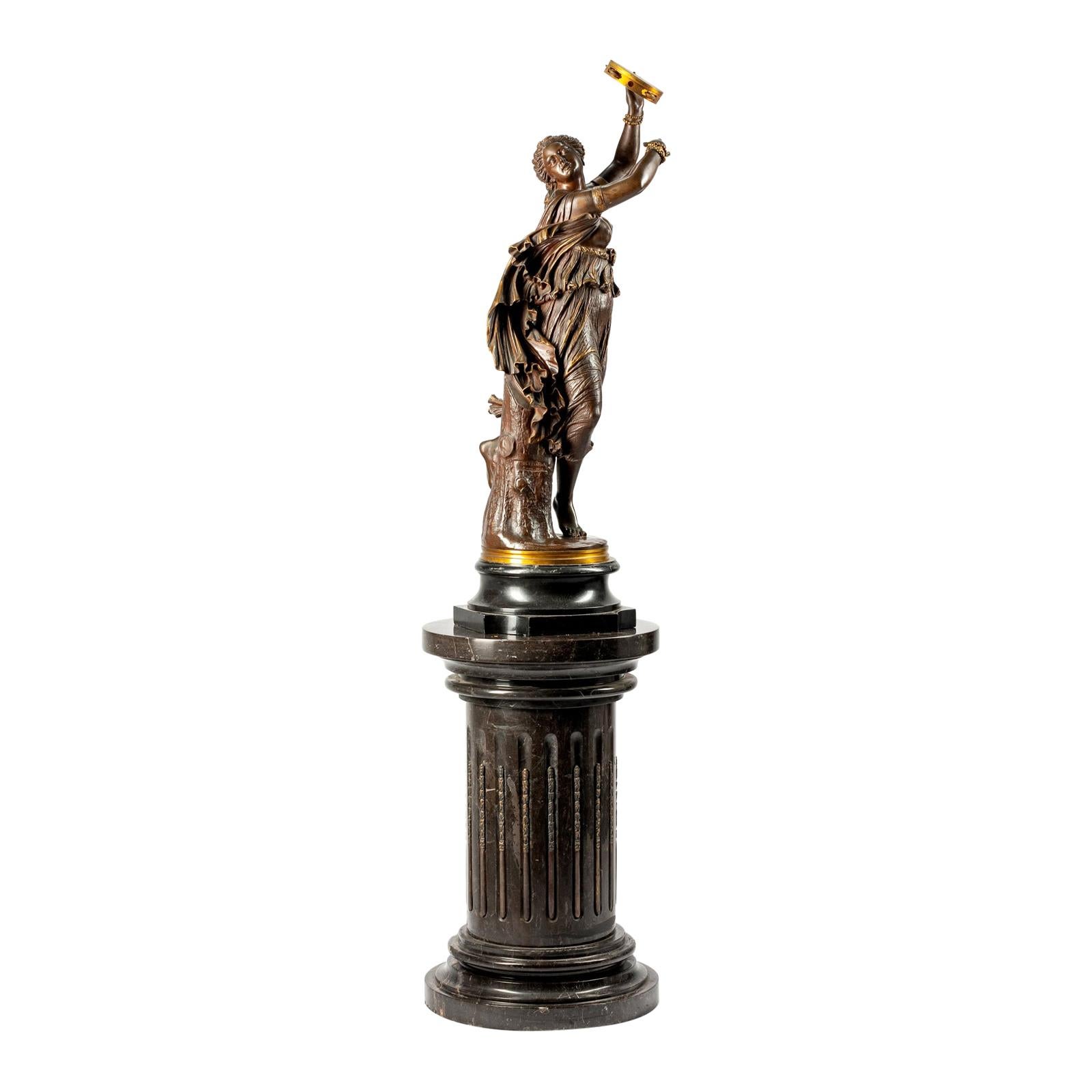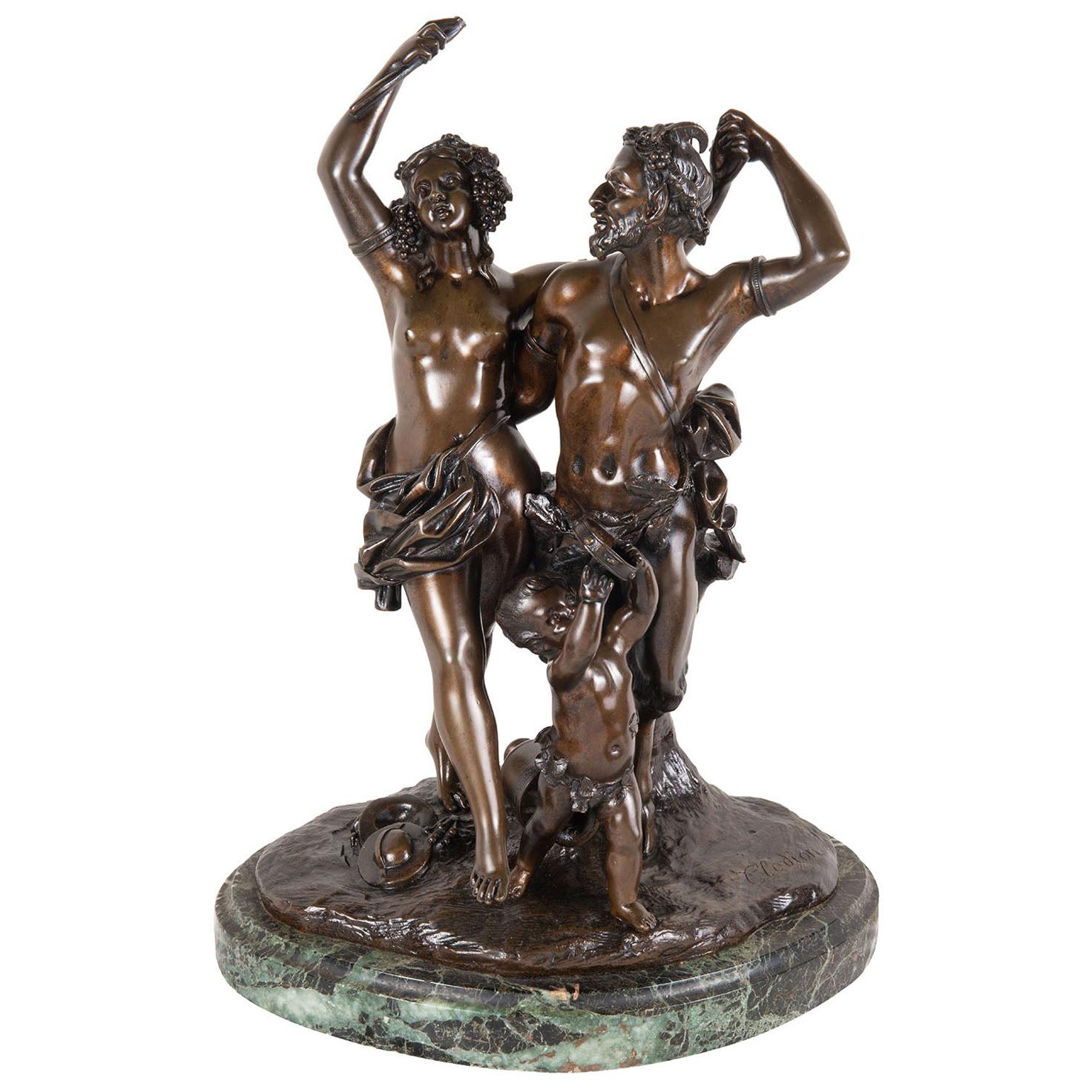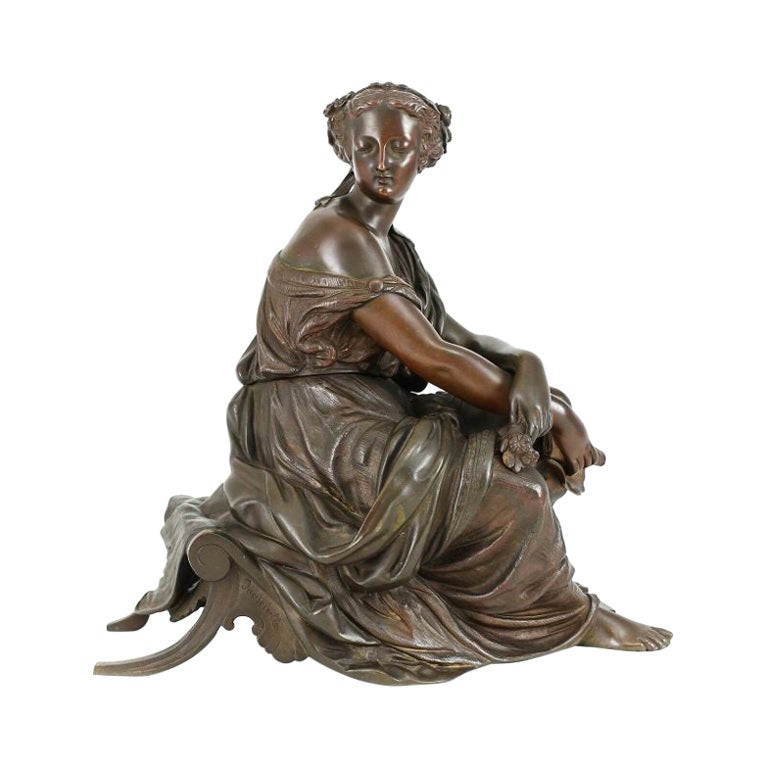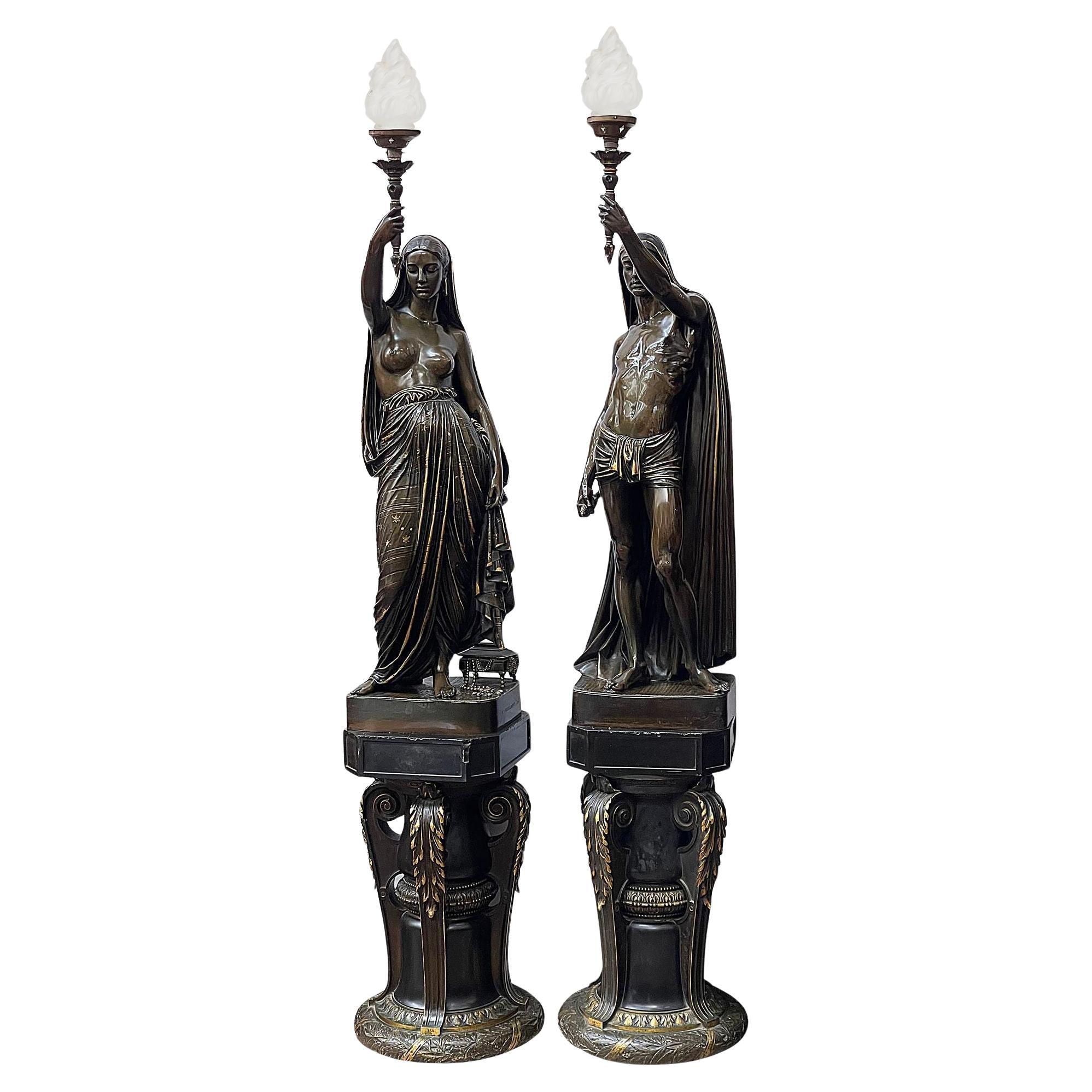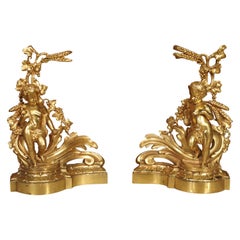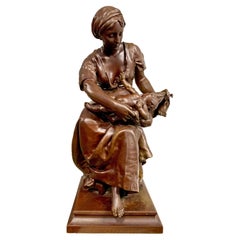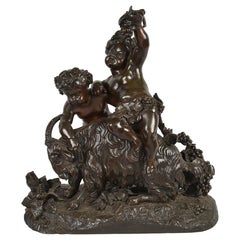
Classical 19th Century Gilt and Patinated Bronze Figural Group from France
View Similar Items
Want more images or videos?
Request additional images or videos from the seller
1 of 21
Classical 19th Century Gilt and Patinated Bronze Figural Group from France
About the Item
- Attributed to:Pierre-Louis Detrier 1 (Sculptor)
- Dimensions:Height: 18 in (45.72 cm)Width: 15.38 in (39.07 cm)Depth: 8.5 in (21.59 cm)
- Style:Napoleon III (Of the Period)
- Materials and Techniques:Bronze,Patinated
- Place of Origin:
- Period:
- Date of Manufacture:1800s
- Condition:Minor fading. Very good antique condition with minor surface build up and wear to patina (see photos of shoulders on standing woman).
- Seller Location:Dallas, TX
- Reference Number:Seller: 521-281stDibs: LU906324032252
About the Seller
5.0
Platinum Seller
These expertly vetted sellers are 1stDibs' most experienced sellers and are rated highest by our customers.
Established in 1983
1stDibs seller since 2011
738 sales on 1stDibs
More From This SellerView All
- 19th Century French Patinated Bronze Bust of a SoldierBy Paul DuboisLocated in Dallas, TXCast in France during the 1800s, this patinated bronze bust depicts a woman soldier, based on the style of hair and the ceremonial accoutrement on the armor cuirass. Our stoic soldier has a four-petal flower adorning the breastplate (to the viewer’s left of the artist’s signature-Dubois). On each side of the flower is a dangling strap for the helmet that protects the heroine. At the top of the helmet is a mythical creature, resembling a dragon with a long three-prong tail, with the outer two tendrils curling along the sides of the helmet. A thick bun protrudes from the back of the open cabasset-style helmet. The style of the helmet is reminiscent of the 19th century Paul Dubois bronze...Category
Antique 19th Century French Busts
MaterialsMetal, Bronze
- Pair of 19th Century Gilt Bronze French ChenetsLocated in Dallas, TXThis is a stunning pair of French fireplace bronze doré chenets from the 1800’s. Each chenet has a putto standing on a large cluster of curled acanthus leaves. Beneath the leaves are thick bases with cavetto molding adorned with a series of C-scrolls. Grapevines and wheat husks emanate upwards from the leaves, giving the chenets some additional height. One of the putti is pulling a grapevine over his shoulder, while the other one has a sickle in his hand. French chenets...Category
Antique Late 19th Century French Louis XV Fireplace Tools and Chimney Pots
MaterialsBronze
$1,600 / set - Fine 19th Century Porcelain Capodimonte Group of Cherubs and a GoatBy CapodimonteLocated in Dallas, TXThis bright Capodimonte porcelain group of four putti and a goat symbolizes abundance and the spirit of life. Capodimonte was originally an 18th century Italian porcelain...Category
Antique Late 19th Century Italian Classical Greek Porcelain
MaterialsPorcelain
- Pair of 19th C, French, Bronze Soldiers, before and After the Fight, H. DumaigeBy Etienne-Henri DumaigeLocated in Dallas, TXStanding over 2 feet tall, these high quality bronze statues depict soldiers during the French revolutionary wars. They are labeled and signed Dumaige (French sculptor, Etienne-Henry Dumaige 1830-1888). The statues show incredible detail, excellent proportion, and retain their original, rich, brown patina, which is still in remarkable condition. Each solider has a raised brass placard on the front of the 1 ½” thick square bases: one reads Avant le combat volontaire de 1792 par Dumaige, H.C, while the other is titled “Apres le combat grenadier de 1792 par Dumaige, H.C.”. The designation “H.C.” stands for Hors concours (“standout”), which is used for artwork that is excluded from competition because it has already claimed top honors elsewhere. Avant, meaning “before” shows our soldier as a volunteer drummer. Drums were used on the battlefield not only to provide cadence for the soldiers, but also to issue orders based on the percussion pattern. Here, our soldier’s drum is attached to a harness that runs across his right shoulder. Both hands are gripping the frame of the drum, while there is a drumstick in his left hand. There is a satchel on the soldier’s back as he stands on grass with a small wood fence behind him. Our soldier has a mustache with long braided hair in the back. He is wearing a fluted bicorne with a pomme tuft and has earrings in both ears. His jacket is knee-length in the back, with tasseled epaulets on the shoulders. Apres, meaning “after”, depicts the man as a grenadier, enjoying tobacco after a conflict. The grenadier...Category
Antique 19th Century French Napoleon III Figurative Sculptures
MaterialsMetal, Brass, Bronze
- 19th Century Patinated Terra Cotta of Bacchanalian Putti Playing with GoatLocated in Dallas, TXA lovely depiction of the neoclassical taste, three putti can be seen playing with a goat. The terra cotta sculpture from the 1800s has a variegated patination, with hues of dark och...Category
Antique 19th Century French Neoclassical Figurative Sculptures
MaterialsTerracotta
- Fine French Terracotta Bust of a Woman with Wreath and Veil, 19th/20th CenturyLocated in Dallas, TXThis terracotta bust of a woman has some exquisite details. Sculpted in France in the late 1800’s to early 1900’s, our subject has long, straight hair emerging from underneath a hood...Category
Antique Late 19th Century French Busts
MaterialsTerracotta
You May Also Like
- 19th Century French Bronze Figural Group Depicting a Mother and Child by DetrierBy Pierre-Louis Detrier 1Located in Los Angeles, CAPierre Louis Détrier (French, 1822–1897) This fine patinated bronze sculpture by Detrier depicts a mother and child. The attention to detail can be seen in the delicate treatment of ...Category
Antique 1880s French Figurative Sculptures
MaterialsBronze
- Classical 19th Century French Bronze Titled ‘Autumn’ Signed DetrierBy Pierre-Louis Detrier 1Located in London, GBA classical 19th century French bronze titled ‘Autumn’ signed Detrier. She stands in classical garments, with one hand quizzically raised to her chin. Pierre Louis Detrier (189...Category
Antique Late 19th Century French Renaissance Revival Figurative Sculptures
MaterialsBronze
- Classical 19th Century Bacchus Bronze GroupLocated in Brighton, SussexA very pleasing 19th century French Bacchus influenced bronze group, depicting two putti playing with a ram, garlands of vine leaves and grapes. Signed.Category
Antique 19th Century French Figurative Sculptures
MaterialsBronze
- 19th Century French Patinated and Gilt Bronze Figure "Offrande" Signed A. GaudezBy Adrien Étienne GaudezLocated in Dallas, TXDecorate an office or a study with this elegant antique bronze figure. Hand crafted in France circa 1880, and titled "Offrande" ( Offering in English), the sculpture stands on a circ...Category
Antique Late 19th Century French Art Nouveau Figurative Sculptures
MaterialsBronze
- Fine Pair of French 19th Century Gilt and Patinated Bronze Figural CandelabraBy Claude Michel ClodionLocated in Los Angeles, CAA fine pair of French 19th century gilt bronze and patinated bronze figural four-light candelabra, each modeled as a baby Bacchus, in the form of a child faun, seated on tree trunk a...Category
Antique 19th Century French Baroque Candelabras
MaterialsMarble, Bronze
- French 19th C Gilt and Patinated Bronze Group of Gloria Victis, by A. MercieBy Antonin Mercie, F. Barbedienne FoundryLocated in New York, NYAn Incredible and Large Gilt and Patinated Bronze Group of Gloria Victis, a Winged Figure of Victory with a Fallen Warrior. This incredible bronze piece was cast after a model by Maarius-Jean-Antonin Mercié, This model is signed 'F. BARBEDIENNE FONDEUR PARIS' demonstrating that it was cast by Ferdinand Barbedienne's foundry, the best bronzier of the 19th century. The base is further signed 'A. Mercie' and stamped 'Réduction Mécanique' with an inscription of '659'. The figure is mounted on a Belgian noir marble base with various stepped edges. Gloria Victis is one the most well-known and important bronze casts of the 19th Century. The quality of this particular model is absolutely incredible and all the marking indicate that this particular piece is one of the finest produced by the Foundry. A student of Jouffroy and de Falguière at the Ecole des Beaux-Arts, Marius-Jean-Antonin Mercié (1845-1916) won the Grand Prix de Rome at 23 years old with his work Thésée vainqueur du Minotaure. In 1872, he sent the plaster model of his work David vainqueur to the Salon, for which he won the first class medal. At the same time, he received La croix de la Légion d'honneur at the Villa Medici. His return to Paris, in 1874, issued in a long and brilliant career with numerous commissions, notably the monuments for Louis-Philippe and Queen Marie-Amélie for the Royal Chapel at Dreux (1886). By the age of 30 Mercié was already very well-known and his Gloria Victis received resounding success when it was exhibited at the Salon, in 1874 (in plaster) and in 1875 (in bronze). This work exalted the heroism and the patriotic sentiments aroused by the disasters of 1870. His predilection for patriotic subjects is shown in many of his works such as Quand même...Category
Antique 19th Century French Louis XVI Busts
MaterialsBelgian Black Marble, Bronze
$23,780 Sale Price20% Off
